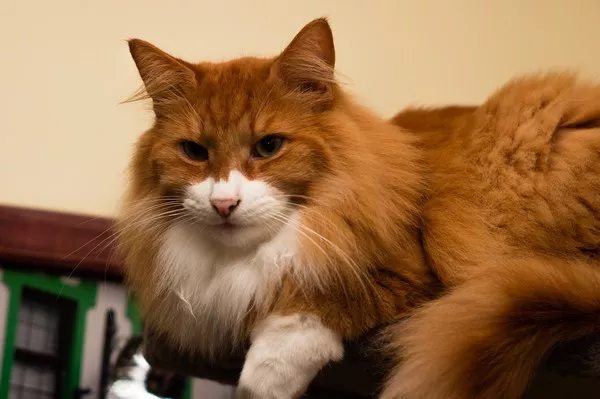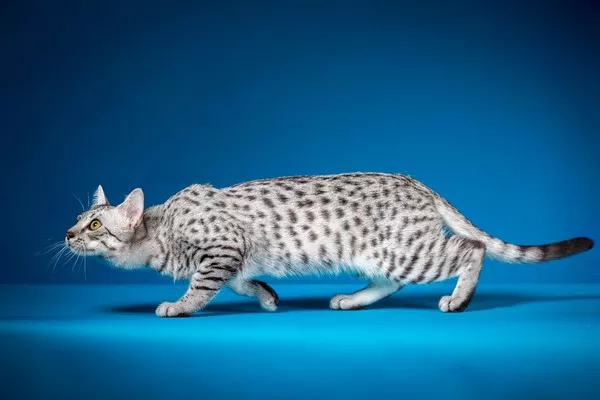Norwegian Forest Cats (NFCs) are renowned for their majestic appearance, characterized by a voluminous and luxurious coat that contributes to their regal charm. However, if your Norwegian Forest Cat seems less fluffy than expected, various factors could be influencing the appearance of their coat. In this in-depth exploration, we dissect the potential reasons behind the perceived lack of fluffiness, encompassing genetic variations, health considerations, grooming practices, and environmental factors. As we embark on this journey, we aim to unravel the mystery and provide insights into maintaining the iconic fluffiness associated with Norwegian Forest Cats.
The Genetic Tapestry of Norwegian Forest Cats
1. Coat Type Variations
Norwegian Forest Cats, like all breeds, exhibit genetic diversity. While the breed standard describes a long, thick, and fluffy coat, individual cats within the breed may display variations. Some NFCs may naturally have a less dense or slightly shorter coat compared to the stereotypical fluffy appearance.
2. Genetic Influences on Coat Quality
The genetic makeup of your Norwegian Forest Cat plays a crucial role in determining the characteristics of its coat. Factors such as the length, thickness, and texture of the fur are influenced by genetics. If your cat inherits certain genetic traits that contribute to a less fluffy coat, it might not exhibit the quintessential NFC fluffiness.
3. Age and Growth Stages
1. Kitten Coat Dynamics: Norwegian Forest Cats undergo developmental stages, and kittens may not exhibit the full extent of their adult coat until they mature. A kitten’s coat may appear less fluffy during the early stages of growth, and the characteristic fluffiness associated with the breed might become more apparent as the cat reaches adulthood.
2. Transition to Adult Coat: The transition from kittenhood to adulthood involves changes in the coat texture. As Norwegian Forest Cats mature, their coat tends to develop more volume and density. Patience is essential during this transitional period, allowing the cat to grow into its full and majestic coat.
Health Factors and Coat Quality
1. Nutritional Considerations
The quality of a cat’s coat is often a reflection of its overall health. If your Norwegian Forest Cat’s diet lacks essential nutrients, it can impact the coat’s texture and shine. Ensure that your cat is receiving a well-balanced and nutritionally complete diet to support optimal coat health.
2. Health Conditions Affecting the Coat
Underlying health issues, such as skin conditions, hormonal imbalances, or allergies, can influence the appearance of a cat’s coat. If your NFC’s coat is not as fluffy as expected, consulting with a veterinarian is crucial. They can conduct a thorough health examination to rule out any potential health concerns affecting the coat quality.
Environmental Factors Impacting Coat Appearance
1. Seasonal Shedding Dynamics
Norwegian Forest Cats, like many long-haired breeds, may experience seasonal shedding. During shedding periods, the coat might appear less fluffy as the cat naturally loses some of its undercoat. Increased grooming during these times can help manage shedding and maintain the overall fluffiness of the coat.
2. Humidity and Static Issues
Dry or low-humidity environments can contribute to static electricity, affecting the appearance of the coat. If your home lacks humidity, consider using a humidifier to create a more favorable environment for your NFC’s coat. Minimizing static helps the fur lay naturally, enhancing its fluffy appearance.
Grooming Practices and Coat Maintenance
1. Regular Brushing Routine
Norwegian Forest Cats have long hair that requires regular grooming to prevent matting and tangling. If grooming is neglected, the coat may appear less fluffy due to the presence of mats and uneven hair distribution. Establishing a consistent brushing routine helps remove loose hair, distribute natural oils, and maintain the fluffiness of the coat.
2. Bathing Considerations
Occasional bathing is part of grooming for long-haired breeds, including NFCs. However, excessive bathing can strip the coat of natural oils, affecting its texture. Strike a balance between maintaining cleanliness and preserving the coat’s natural oils to ensure a healthy and fluffy appearance.
Conclusion: Fostering the Fluffiness of Your NFC
Norwegian Forest Cats are celebrated for their enchanting, fluffy coats that contribute to their majestic allure. If your NFC appears less fluffy than anticipated, a multifaceted approach is needed. Understanding the genetic variations, considering age and growth stages, addressing health factors, implementing proper grooming practices, and being mindful of environmental influences collectively contribute to maintaining the iconic fluffiness of Norwegian Forest Cat coats.
By embracing a holistic approach to your NFC’s well-being and coat care, you can enhance the beauty and texture of their fur. Regular veterinary check-ups, a nutritious diet, consistent grooming, and a cat-friendly environment all play pivotal roles in fostering the fluffiness that defines the Norwegian Forest Cat breed. As you navigate the intricacies of feline coat care, remember that each cat is unique, and their individual characteristics contribute to the enchanting tapestry of diversity within the breed.
























